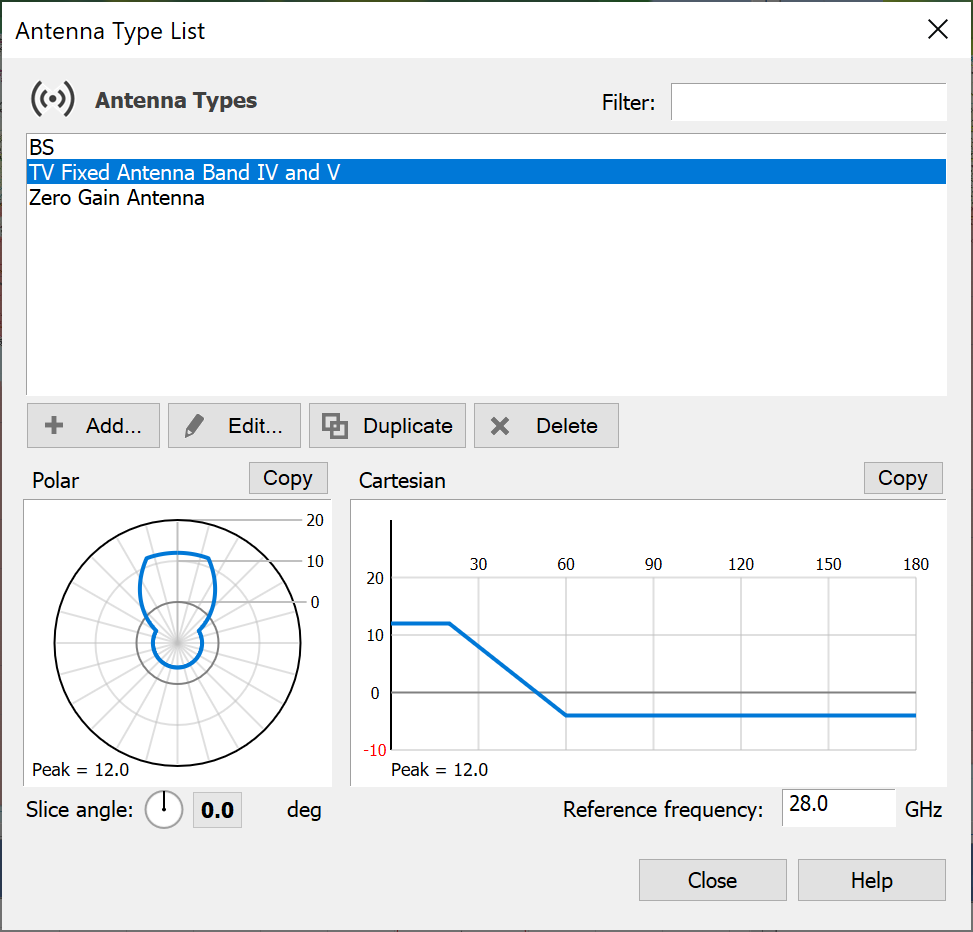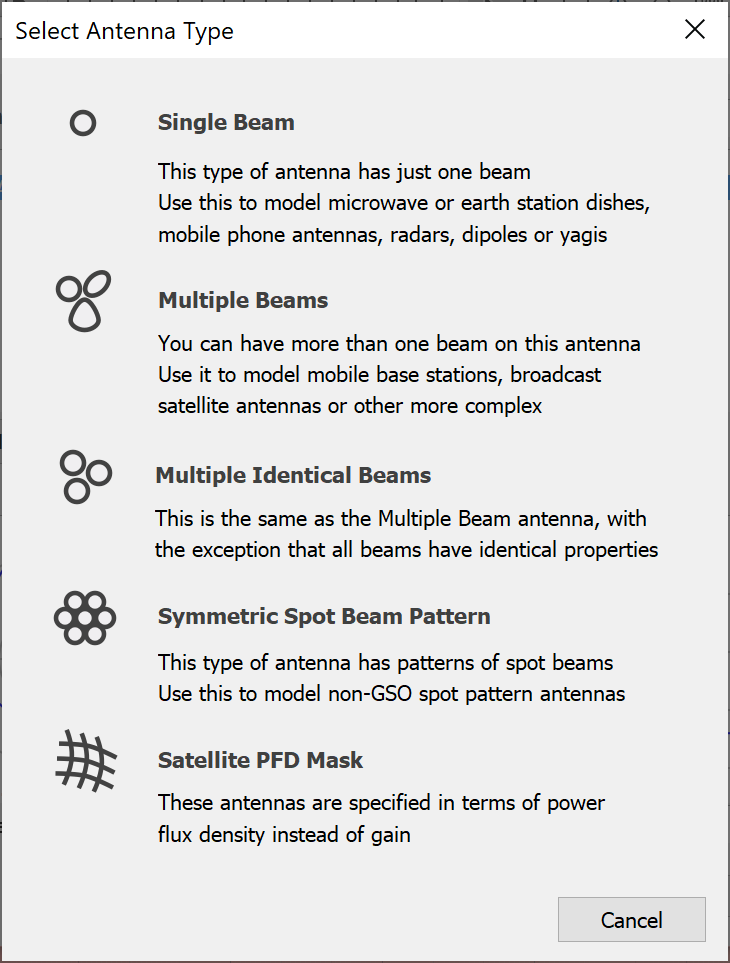Antenna Modelling
The Antenna object is fundamental element in Visualyse. In encapsulates the on and off axis performance of antennas in isolation. An Antenna object can then be attached to multiple Stations where the pointing and tracking options are defined.
So, to begin defining a communications system we now start by defining Antennas – either from the Model menu or by clicking the Antenna icon on the Toolbar. The Antenna list will appear.
The figure below shows an Antenna List as it would appear when three Antennas have been created – by default the List will show a single omni-directional, zero gain antenna.

The Antenna list dialog has an integrated roll-off plot in either Polar or Cartesian coordinates to show the variation in gain against off-axis angle for the selected Antenna.
To create a new Antenna, click the Add button. The Antenna types dialog will be displayed.

You then select from one of the five antenna types, by clicking the icon on the left of the list. The five types are:
- Single beam antenna – this is the simplest choice, the Antenna has a single beam. The beam can be circular, elliptical or shaped.
- Multiple beams – the most flexible option. The Antenna can have multiple beams with different characteristics. The pointing angles of the different beam boresights are defined individually in terms of azimuth and elevation relative to the antenna mechanical boresight.
- Multiple Identical Beams – this option is used where an antenna has multiple beams with identical performance characteristics but different point directions.
- Symmetric Spot Beam Pattern – use this option where the beams in a multiple spot are deployed with circular, hexagonal or square symmetries.
- Satellite PFD Mask – where the antenna performance is constrained by regulatory PFD limits, use this option to define those limits in terms of elevation angle on the ground (or Alpha angle).
We recommend that you read Creation of a Single Beam Antenna to familiarise yourself with the process of creating antennas. The other subsections below, give additional information needed to define the more complex antennas.